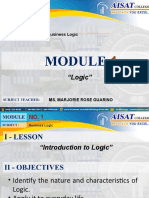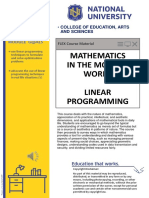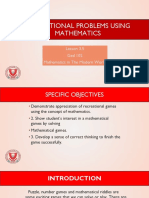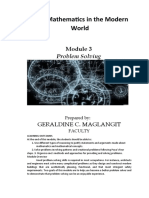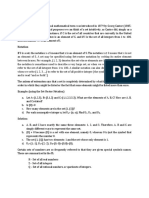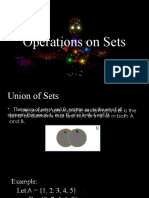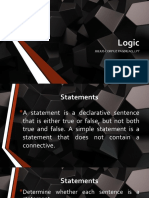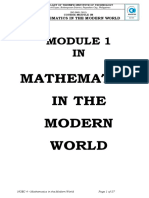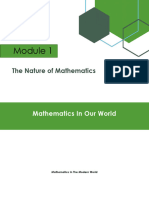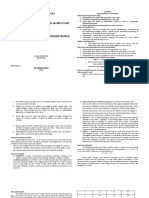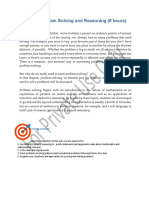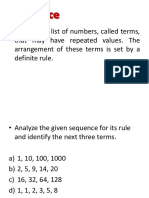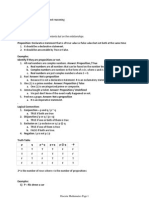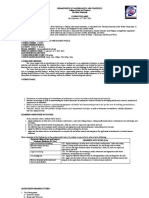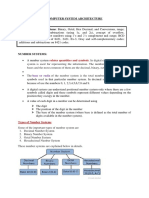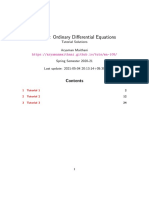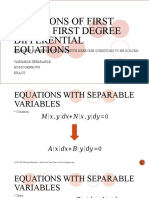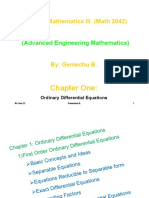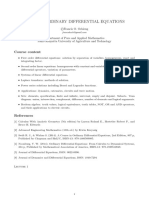0% found this document useful (0 votes)
429 views68 pagesModern Math for Computer Science
This document provides an introduction to representing numbers in binary form for use in digital computers. It discusses:
1. Number systems including decimal and binary, with binary using only the digits 0 and 1. Decimal numbers must be converted to binary for computer processing.
2. Binary arithmetic operations of addition, subtraction, multiplication and division using only two digits and their rules.
3. Examples are provided of converting decimal numbers to binary and performing binary arithmetic calculations.
Uploaded by
Chinee AmanteCopyright
© © All Rights Reserved
We take content rights seriously. If you suspect this is your content, claim it here.
Available Formats
Download as PDF, TXT or read online on Scribd
0% found this document useful (0 votes)
429 views68 pagesModern Math for Computer Science
This document provides an introduction to representing numbers in binary form for use in digital computers. It discusses:
1. Number systems including decimal and binary, with binary using only the digits 0 and 1. Decimal numbers must be converted to binary for computer processing.
2. Binary arithmetic operations of addition, subtraction, multiplication and division using only two digits and their rules.
3. Examples are provided of converting decimal numbers to binary and performing binary arithmetic calculations.
Uploaded by
Chinee AmanteCopyright
© © All Rights Reserved
We take content rights seriously. If you suspect this is your content, claim it here.
Available Formats
Download as PDF, TXT or read online on Scribd
/ 68



